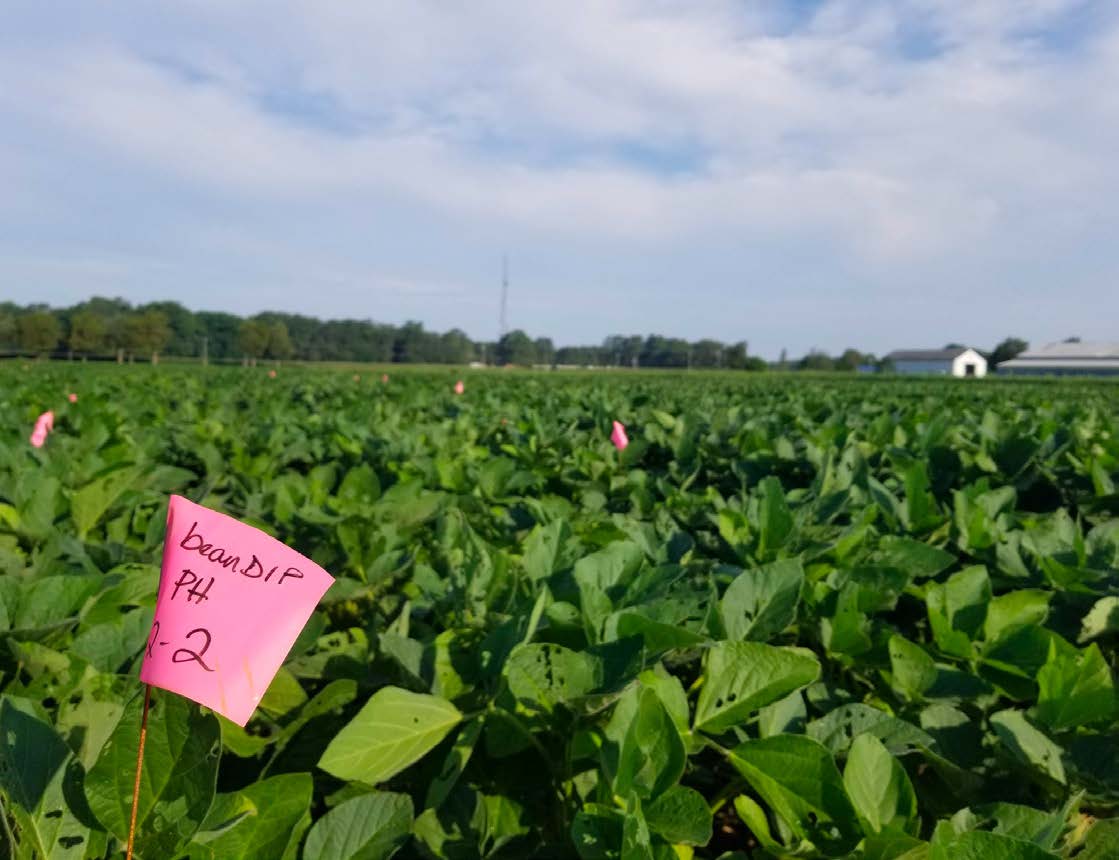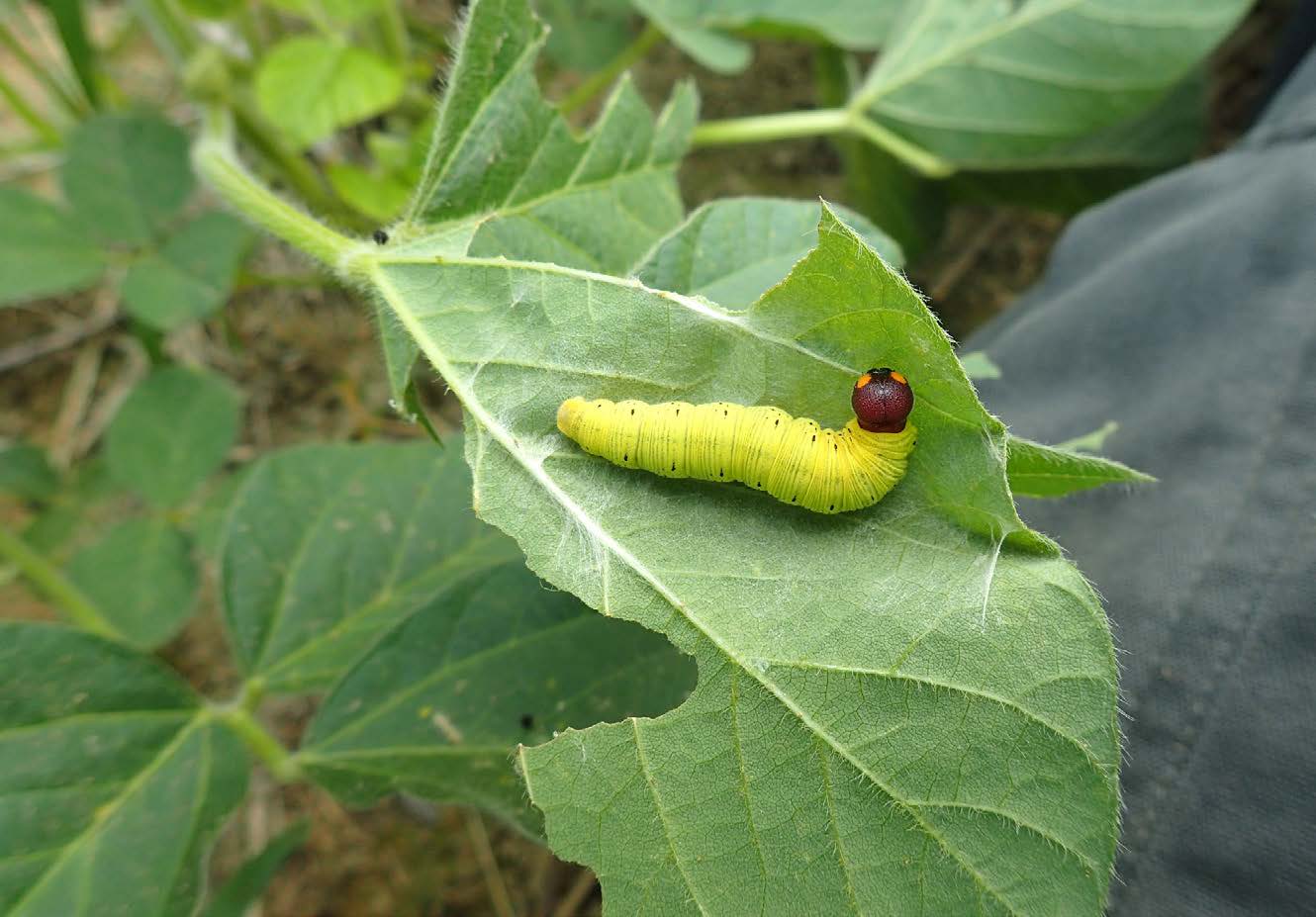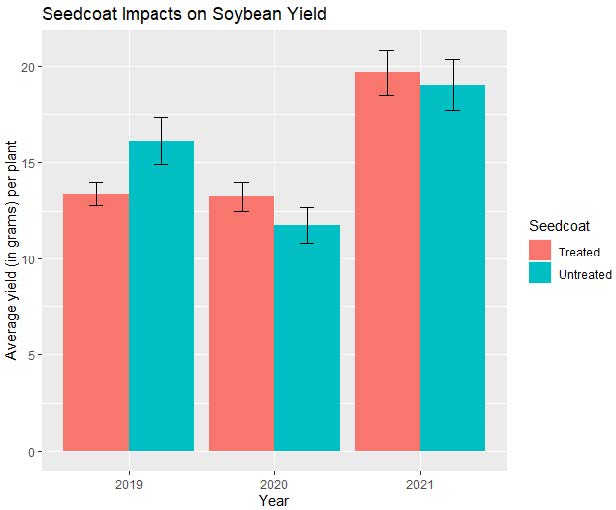Role of Rhizobial Diversity for Drought and Herbivory Tolerance in Soybean
Authors: Brendan Randall (PhD student), Kelsey McGurrin (Faculty Specialist), and Karin Burghardt (Assistant Professor)
Research team: Burghardt lab members from the Department of Entomology in collaboration with Smithsonian Environmental Research Center and UNC-Greensboro researchers, and Dr. Nicole Fiorellino (Director of the UMD soybean variety trial).

Increasing the diversity of soil bacteria interacting with a plant may help decrease insect herbivory, especially during droughts (link). To follow up on this work, our team collected data within the University of Maryland Soybean Variety Trial from 2019-2022 at four UMD RECs (Fig 1. Poplar Hill, Clarksville, Wye, and Keedysville). We are interested in measuring traits and yield of soybean plants from the same varieties growing across a wide range of environmental conditions (Fig 2. drought, flooding, insect herbivory) and determining how that relates to the diversity of the nitrogen-fixing bacterial partners (rhizobia) associated with the plant (Project BeanDIP).
As an additional question in this field study, we investigated whether commonly applied soybean seed treatments that include fungicides, insecticides, and often a rhizobial inoculum decrease herbivore damage on soybeans or increase yield. While we occasionally see early season decreases in piercing-sucking insect damage, we found no evidence that seed treatments lead to higher bean yield across three years of the replicated study for the soybean varieties tested (Fig. 3) across the REC farms.

Data from the field trial on rhizobial diversity, herbivory, plant traits, and yield will be paired with ongoing experiments at the UMD greenhouse, manipulating the strain identity and diversity of rhizobial partners to determine if this can help soybean plants be resilient to the multiple stressors likely to increase with climate change in MD. Preliminary results indicate that the strain identity of the rhizobial partner can differentially alter the level of chewing insect herbivory and trait expression related to growth and drought resistance depending on the watering conditions (drought or ambient). Therefore, some rhizobia strains are more effective at enhancing resistance traits in soybean plants than others. Harnessing rhizobia partners that fix large amounts of nitrogen as well as partners that may enhance resistance traits in the plant through seed inoculums or liquid culture spraying, may improve grower outcomes while also contributing to higher levels of soil diversity. Future work in the field will examine the role of targeted rhizobia partner diversity in driving resistance to herbivory and drought stress through rainfall manipulation experiments in experimental soybean plots at UMD REC facilities.

Back to Roots in Research Clarksville LESREC